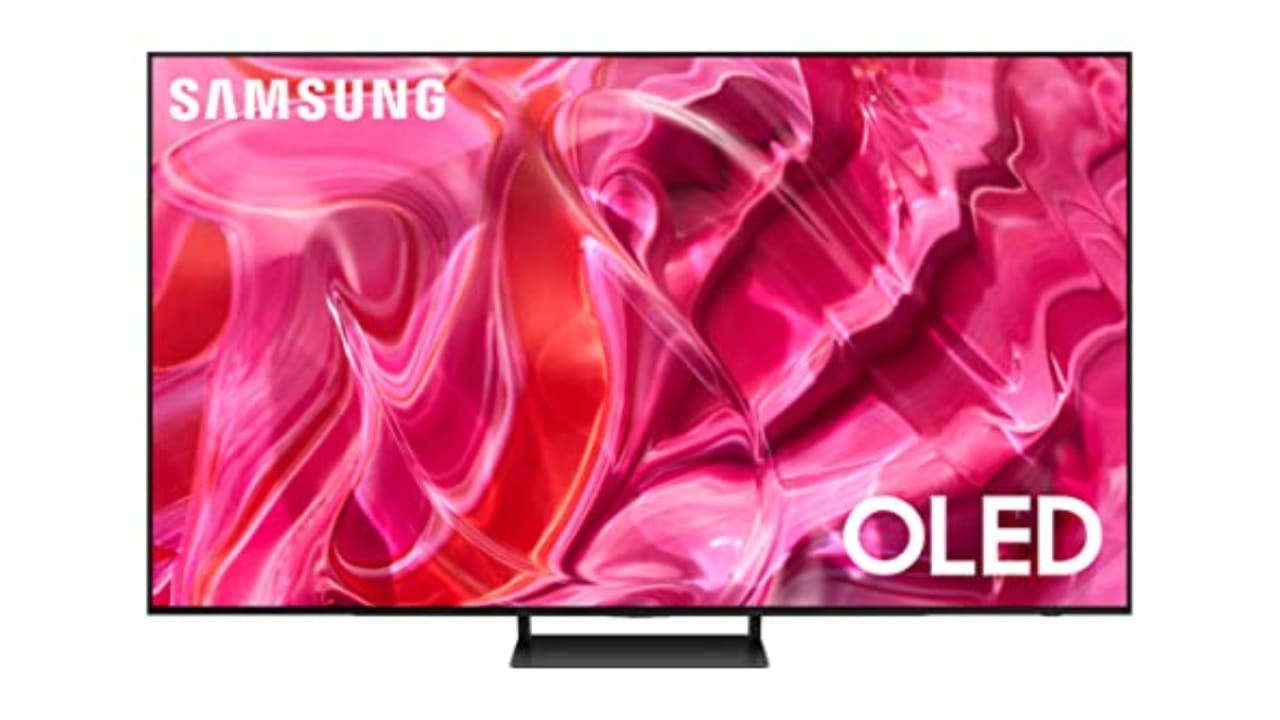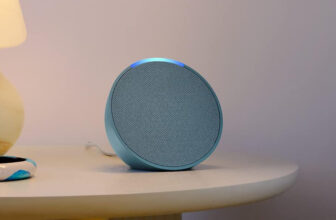Lately, the perfect gaming TVs are actually no totally different from the perfect TVs you should purchase usually. That mentioned, there are a number of key options to bear in mind when searching for a set to get essentially the most out of your PlayStation 5 or Xbox Series X/S. No, you don’t want a flowery TV to easily take pleasure in a online game, however a great display screen can solely make the expertise extra pleasing. For those who’re not sure the place to begin, we’ve laid out some useful recommendation for getting a great gaming TV and famous a number of well-reviewed examples you should purchase immediately, at varied value factors.
What to search for in a gaming TV
Whether or not you employ it for gaming or not, all good TVs are constructed on the identical foundations. You desire a 4K decision, enough brightness, excessive distinction ratios with deep and uniform black tones, colours that discover the fitting stability between accuracy and saturation, and huge viewing angles. For video video games particularly, you desire a TV with minimal enter lag and quick movement response, with no blur or different undesirable artifacts behind quick-moving objects. In fact, discovering a set that has all of those gaming options and matches into your funds could be difficult.
For now, a high OLED TV will supply the perfect image high quality for gaming or in any other case. However good OLED TVs normally value greater than their LCD counterparts, and a few OLED units might not get vivid sufficient for individuals who have their TV set in a very well-lit room. For those who go for an LCD TV, a sophisticated backlight with mini LEDs and efficient full-array local dimming will normally enhance distinction and lighting element, whereas a quantum dot filter can improve colours.
One factor you don’t want to fret about is 8K assist. Though the PS5 and Xbox Sequence X are technically able to outputting 8K video, only a few video games are made for that decision, and 8K’s sensible advantages are extremely minimal except you propose on sitting unreasonably shut to an enormous TV. The few 8K TVs available on the market are additionally very expensive.
All that mentioned, there are a number of phrases you need to notably look out for when shopping for a TV on your new recreation console or high-end graphics card.
HDMI 2.1
To get essentially the most out of a PlayStation 5 or Xbox Sequence X/S, your TV ought to have full HDMI 2.1 assist. That is the most recent main replace to the HDMI spec, enabling the next most bandwidth — 48 gigabits per second, up from HDMI 2.0’s 18 Gbps — and a handful of options which might be helpful for gaming efficiency particularly. These embody variable refresh charge (VRR) and automated low latency mode (ALLM), which we element additional beneath.
Past that, maybe the chief perk of HDMI 2.1 is its capability to transmit sharp 4K video as much as a 120Hz refresh charge with trendy consoles just like the PS5 and Xbox Sequence X, or as much as 144Hz with a robust gaming PC. Not each PS5 or Xbox Series X/S recreation helps body charges that top — and a few solely do at decrease resolutions — however people who do will feel and appear particularly fluid in movement. HDMI 2.1 additionally consists of assist for Enhanced Audio Return Channel (eARC), which lets you move higher-quality lossless audio from a supply machine related to the TV to a appropriate soundbar or receiver.
The extra full HDMI 2.1 ports your TV has, the higher. “Full” is the important thing phrase there. As reported by TFT Central, as a result of HDMI 2.1 is backwards appropriate with HDMI 2.0, TV and monitor producers have been allowed to model HDMI ports as “HDMI 2.1” even when they lack full (or any) assist for the spec’s upgraded options. We advocate a number of TVs beneath which have true HDMI 2.1 ports, however for those who’re shopping for a brand new TV for gaming, ensure your chosen set isn’t making an attempt to cover any capabilities you might contemplate important.
HDR — Excessive Dynamic Vary
HDR refers to a TV’s capability to show a wider vary between the darkest and brightest components of an image. This broader vary can convey out particulars that might in any other case be lacking on an ordinary dynamic vary (SDR) TV, in each the very darkish and, particularly, the very vivid areas of a picture. HDR usually comes with an enchancment to paint replica as properly, displaying a bigger palette of extra vibrant colours that brings content material nearer to its creator’s unique imaginative and prescient.
To get an HDR image, you want each content material that’s mastered to benefit from the tech and a TV able to displaying that content material. HDR additionally is available in a wide range of codecs, that are usually break up between people who make the most of static metadata (e.g., HDR10) and people who make the most of dynamic metadata (e.g., HDR10+, Dolby Imaginative and prescient). Briefly, the latter permits a TV to optimize its brightness and colours on a per-scene and even per-frame foundation, whereas the previous makes use of one set of optimized settings for the whole thing of the given content material. Help for these codecs can differ relying on the TV, content material and recreation console you employ. The Xbox Sequence X and S, for instance, assist Dolby Vision for gaming, whereas the PS5 doesn’t.
The excellent news is that the majority TVs you’d purchase in 2023 are HDR-ready in some vogue, even on the funds finish of the market. The catch is that some TVs are significantly better at getting essentially the most out of HDR than others. The identical goes for precise content material mastered in HDR. With video video games specifically, there aren’t fairly as many titles designed to benefit from HDR as there are motion pictures (although the quantity is rising on a regular basis), and the variance in HDR high quality tends to be wider.
HGiG — HDR Gaming Curiosity Group
HGiG stands for the HDR Gaming Interest Group. Sony and Microsoft are each members, as are many TV makers and recreation builders. What this implies is that, ideally, all of the teams talk data so to begin up a brand new recreation on a console or PC and have it robotically acknowledge your show. As soon as that occurs, the sport can modify the inner settings to regulate for that show’s capabilities and provide the greatest image high quality doable, with out dropping particulars within the brightest or darkest areas of the display screen. For instance, daylight on the finish of a darkish tunnel might painting a brightly lit setting as an alternative of wanting like an overexposed white blob.
It is a good factor, however the actuality is a little more difficult. Not all TVs spotlight HGiG compatibility of their settings menu, whereas just some PlayStation and Xbox video games acknowledge and comply with the rules. If an HGiG choice is listed in your TV’s tone mapping settings, you need to flip it on previous to working the console’s HDR settings. Then, for those who’re taking part in a recreation that helps HDR and HGiG, you have to be in fine condition with out having to regulate the assorted luminance ranges once more. Nonetheless, how all of this seems to you would possibly differ relying in your TV and the sport you’re taking part in. Homeowners of sure LG OLED TVs, as an example, might desire their TV’s Dynamic Tone Mapping setting. Use no matter settings you assume look greatest.
ALLM — Auto Low Latency Mode
ALLM permits a supply (like your PS5 or Xbox) to inform the show to change into an image mode that reduces lag between receiving every body of a picture and displaying it on the TV. This cuts out extra processing that might be the milliseconds of distinction between touchdown a exact enter or not. trendy TV can robotically swap to recreation mode, then again out if you’d moderately watch a film or TV present.
VRR — Variable Refresh Fee
VRR will sound acquainted for those who’re a PC gamer. Most gamers have skilled slowdown, display screen tearing or stuttering as a system struggles to render every body on the goal pace, which is mostly 30 or 60 fps on a TV. With VRR, every thing stays in sync: Your show will not present the subsequent body till it is prepared, which might make issues really feel smoother and extra responsive, even when the system fails to ship on its goal body charge.
There are a number of totally different implementations of VRR accessible, together with Nvidia’s G-Sync, AMD’s FreeSync and the HDMI Discussion board’s VRR spec, which is a part of the total HDMI 2.1 customary. Each a TV and an enter machine have to assist the identical VRR tech for it to work, and totally different gadgets might solely assist VRR inside a particular refresh charge window. On a 120Hz show, as an example, the PS5’s VRR solely works between 48Hz and 120Hz.
As a reminder, the PS5 supports HDMI Discussion board VRR, the Xbox Sequence X/S assist HDMI Discussion board VRR and FreeSync, whereas gaming PCs might assist G-Sync or FreeSync relying on whether or not they use a Nvidia or AMD graphics card. A terrific gaming TV helps all the massive VRR codecs, however lacking, say, G-Sync, isn’t a killer for those who solely recreation on a PS5 or Xbox.
Good gaming TVs you will get proper now
The likes of Samsung, LG, TCL, Vizio and Hisense have unveiled new TVs for 2024 however, as of this writing, we’ve solely lately started to see the first few of those change into accessible. Particulars for extra new fashions needs to be confirmed within the coming weeks. If historical past is any indication, although, most of these units are unlikely to be game-changing upgrades over the 2023 fashions nonetheless on sale immediately, they usually’ll value extra out of the gate. We’ll must see if there are exceptions, after all: Samsung’s new S95D OLED TV now makes use of anti-glare technology, as an example, whereas Hisense guarantees improved brightness throughout its new midrange units. If you need the most recent and biggest and are prepared to pay extra to get it, maintain out for a bit longer.
However the TV market is at all times in movement. Many of the greatest fashions from final yr have steadily fallen in value since launch, and they need to solely drop additional as producers look to filter out stock. Which means, usually, shopping for a great 2023 TV ought to proceed to supply essentially the most bang on your buck, not less than for the close to time period. These are the units we’ve highlighted with our suggestions beneath. Whereas we at Engadget don’t formally overview TVs, we’re assured in our picks after completely researching person suggestions and the consensus from different skilled overview websites we belief, corresponding to Rtings, Wirecutter, Reviewed and PCMag, amongst others.
Display screen sizes: 55″, 65″, 77″, 83″ | Show kind: QD-OLED | Decision: 4K | Most refresh charge: 144Hz (120Hz on 83″) | HDR codecs: HDR10, HDR10+, HLG | HDMI ports: 4x HDMI 2.1 | VRR: HDMI Discussion board VRR, FreeSync Premium, G-Sync appropriate | Sensible OS: Tizen | Display screen type: Flat | ALLM: Sure | TV tuner: ATSC 3.0
The Samsung S90C has a QD-OLED show that mixes an OLED panel with a layer of quantum dots. This permits it to show the excessive distinction and deep blacks of any good OLED TV with out sacrificing as a lot in the best way of peak brightness or coloration saturation. It ought to ship persistently clean movement, and it has 4 HDMI 2.1 ports that may play as much as 4K 144Hz. It additionally helps HDR10 and HDR10+, ALLM and the foremost VRR codecs. Sizes vary from 55 to 83 inches. Like the remainder of Samsung’s TV lineup, nevertheless, it doesn’t work with Dolby Imaginative and prescient HDR.
We’ll additionally observe the Samsung S95C, a higher-end mannequin. It, too, can play in 4K as much as 144Hz, and a few reviews say it will probably get a bit brighter than the S90C in HDR. Because it runs its ports by an exterior field, its precise {hardware} is thinner as properly. But it surely’s considerably dearer, so it’s tougher to justify except cash isn’t any object. The aforementioned S95D OLED TV, Samsung’s flagship for 2024, could also be a extra significant improve, although it’s solely simply change into accessible and prices much more.
- Excessive distinction with deep blacks
- Good brightness
- Obtainable in sizes as much as 83 inches
- Doesn’t assist Dolby Imaginative and prescient HDR
Display screen sizes: 42″, 48″, 55″, 65″, 77″, 83″ | Show kind: WOLED | Decision: 4K | Most refresh charge: 120Hz | HDR codecs: Dolby Imaginative and prescient, HDR10, HLG | HDMI ports: 4x HDMI 2.1 | VRR: HDMI Discussion board VRR, FreeSync, G-Sync licensed | Sensible OS: webOS | Display screen type: Flat | ALLM: Sure | TV tuner: ATSC 1.0
The LG C3’s WOLED panel can’t get as vivid as a QD-OLED TV just like the Samsung S90C, nevertheless it nonetheless performs excellently when it comes to distinction, enter lag, movement response and viewing angles. It’s often accessible for a bit bit lower than the S90C, too. It follows the HGiG’s HDR pointers, helps ALLM, works with all the foremost VRR codecs and has 4 full HDMI 2.1 ports able to outputting 4K 120Hz with a PS5, Xbox or PC. It additionally helps all the foremost HDR requirements, together with Dolby Imaginative and prescient, and it’s accessible in all kinds of sizes, from 42 to 83 inches. It’s simply much less splendid in a brightly-lit room, and it doesn’t assist a 144Hz refresh charge for individuals who might wish to get essentially the most out of a gaming PC.
- Excessive distinction with deep blacks
- Helps Dolby Imaginative and prescient
- Obtainable in sizes as much as 83-inches
- Not as vivid as QD-OLED TVs
- Doesn’t assist 144Hz refresh charges
Display screen sizes: 43″, 50″, 55″, 65″, 75″, 85″ | Show kind: QLED with mini-LED backlight (VA panel on 43″ and 50″, ADS panel on 55″ and up) | Decision: 4K | Most refresh charge: 120Hz (144Hz on 43″ and 50″) | HDR codecs: HDR10, HDR10+, HLG | HDMI ports: 4x HDMI 2.1 | VRR: HDMI Discussion board VRR, FreeSync Premium Professional, G-Sync appropriate | Sensible OS: Tizen | Display screen type: Flat | ALLM: Sure | TV tuner: ATSC 3.0
For those who want the improved brightness of a LCD TV, or for those who assume you would possibly play one recreation (extraordinarily) lengthy sufficient to fret about burn-in, contemplate the Samsung QN90C. It might probably’t match the distinction, response time or viewing angles of a great OLED mannequin, however its mini-LED backlight and quantum-dot coloration ought to make for a richer picture than most LCD TVs, notably in HDR. Its movement and enter lag shouldn’t trigger issues both, and it will probably get a lot brighter than the fashions talked about above. It nonetheless doesn’t assist Dolby Imaginative and prescient, nevertheless it has 4 full HDMI 2.1 ports, ALLM and all the massive VRR codecs. It additionally is available in a number of display screen sizes, with the 43- and 50-inch fashions able to hitting a 144Hz refresh charge. The remainder go as much as 120Hz, which is the max for a PS5 or Xbox Sequence X/S. The 43- and 50-inch variations of those TVs use VA panels, although, which ought to lead to higher distinction however worse viewing angles.
The Sony X93L is another highly-rated premium LED TV that does assist Dolby Imaginative and prescient, albeit at 60Hz solely, and might auto-calibrate HDR on a PS5. It has two fewer HDMI 2.1 ports than the QN90C, nevertheless, which makes it a tighter match for these with a number of gaming gadgets, and its measurement vary begins at 65 inches.
- Good mini-LED backlight
- Quantum-dot coloration
- Obtainable in sizes as much as 85 inches
- Doesn’t assist Dolby Imaginative and prescient
Display screen sizes: 55″, 65″, 75″, 85″, 100″ | Show kind: QLED with mini-LED backlight (ADS Professional panel on 75″, VA panel on others) | Decision: 4K | Most refresh charge: 144Hz | HDR codecs: Dolby Imaginative and prescient, HDR10, HDR10+, HLG | HDMI ports: 2x HDMI 2.1, 2x HDMI 2.0 | VRR: HDMI Discussion board VRR, FreeSync Premium Professional, G-Sync appropriate | Sensible OS: Google TV | Display screen type: Flat | ALLM: Sure | TV tuner: ATSC 3.0
The TVs above are all fairly costly. For those who’re on extra of a funds, the Hisense U8K, one other QLED TV with mini LEDs, needs to be a powerful worth. It will not be a greater gaming TV than the QN90C in a vacuum, because it solely has two full-fat HDMI 2.1 ports, and its picture will wash out extra dramatically when seen from an angle. However reviews suggest that, for a number of hundred much less, it’ll nonetheless look good in any lighting setting, with spectacular brightness ranges, 4K 144Hz assist, all the principle HDR codecs, VRR, ALLM and low-enough enter lag in recreation mode. You’ll nonetheless sacrifice distinction in comparison with a great OLED TV, nevertheless, and movement received’t look fairly as quick or clean.
The TCL QM8 looks to be a powerful QLED choice on this value vary as properly. It might probably get a bit brighter than the U8K and helps as much as a 144Hz refresh charge in 4K or a super-fast 240Hz in 1080p. Not like the Hisense mannequin, it additionally retains its eARC port separate from its two HDMI 2.1 ports, which implies you possibly can hold a PS5, Xbox Sequence X and eARC-compatible soundbar connected and optimized with out ever having to fiddle with inputs. Its smallest measurement is 65 inches, although, and some evaluations say it’s a bit worse than the U8K at upscaling lower-resolution content material, which can have an effect on these seeking to play retro consoles.
If you wish to pay rather less, in the meantime, the Hisense U7K gives an analogous set of gaming options as its higher-end sibling however isn’t as vivid or vivid.
- Inexpensive
- Good viewing angles
- 4K 144Hz assist
- Distinction is not pretty much as good as that of an OLED TV
Display screen sizes: 55″, 65″, 75″ | Show kind: QLED with mini-LED backlight | Decision: 4K | Most refresh charge: 60Hz | HDR codecs: Dolby Imaginative and prescient, HDR10, HDR10+, HLG | HDMI ports: 4x HDMI 2.0 | VRR: HDMI Discussion board VRR, FreeSync appropriate, G-Sync appropriate | Sensible OS: Google TV | Display screen type: Flat | ALLM: Sure | TV tuner: ATSC 1.0
On the decrease finish of the value spectrum, the Hisense U6K is the uncommon budget-level TV with quantum-dot coloration, a mini-LED backlight and full-array native dimming. Various reviews say all of this helps it ship higher distinction and coloration quantity than most value-oriented fashions. ALLM and the foremost HDR requirements are supported as properly. Technically, it’s additionally a VRR show — however, like many cheaper TVs, the U6K is proscribed to a 60Hz refresh charge, in order that assist solely goes up to now. There are not any HDMI 2.1 ports both, and the TV’s brightness ranges and movement dealing with will nonetheless be a transparent step down from dearer choices. However at $350 or so for a 55-inch mannequin, these points needs to be simpler to miss.
The TCL Q5 is one other notable funds choice, because it’s one of many few low cost TVs that may play as much as 120Hz, albeit solely at a 1080p or 1440p decision. It lacks an area dimming function and the U6K’s mini- LED backlight, however for competitive-minded avid gamers who’re prepared to commerce some sharpness and movie high quality for a extra responsive picture, it might be a good worth. The identical sentiment ought to apply to the TCL Q6, which gives barely larger brightness ranges however prices a bit additional.
- Inexpensive
- Mini-LED backlight
- Quantum-dot coloration
- Restricted to 60Hz refresh charges
- No HDMI 2.1 ports
Richard Lawler contributed to this report.
Trending Merchandise

Cooler Master MasterBox Q300L Micro-ATX Tower with Magnetic Design Dust Filter, Transparent Acrylic Side Panel…

ASUS TUF Gaming GT301 ZAKU II Edition ATX mid-Tower Compact case with Tempered Glass Side Panel, Honeycomb Front Panel…

ASUS TUF Gaming GT501 Mid-Tower Computer Case for up to EATX Motherboards with USB 3.0 Front Panel Cases GT501/GRY/WITH…

be quiet! Pure Base 500DX Black, Mid Tower ATX case, ARGB, 3 pre-installed Pure Wings 2, BGW37, tempered glass window

ASUS ROG Strix Helios GX601 White Edition RGB Mid-Tower Computer Case for ATX/EATX Motherboards with tempered glass…











